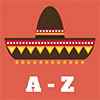 Traditional pieces of the male and female national costumes in Hungary: bocskor, bikla, bunda, cifraszűr, csepesz, daróc, dolman, full gatya, gatya, guba, gyűszű, hárászkendő, harisnya, kis bunda, kodmon, kuchma, kuzsók, mellrevaló, mente, pacsa, palást, párta, pendely, pille, rokolya, suba, szűr, and tüsző.
Traditional pieces of the male and female national costumes in Hungary: bocskor, bikla, bunda, cifraszűr, csepesz, daróc, dolman, full gatya, gatya, guba, gyűszű, hárászkendő, harisnya, kis bunda, kodmon, kuchma, kuzsók, mellrevaló, mente, pacsa, palást, párta, pendely, pille, rokolya, suba, szűr, and tüsző.
Bocskor – work footwear; unisex laced-up sandals. In winter, they were worn with leggings underneath.
Bikla – white petticoat made from tulle, linen, or cambric.
Bunda – collarless cloak made from sheepskin. The fur of Hungarian long-woolled sheep is used. Bunda is one of the most popular outerwear garments in Hungary.
Cifra szűr (cifraszűr) – festive embroidered frieze mantle or cape. It is a male woolen garment with fake sleeves and a lot of embellishments. Similar garments are used in several countries of the Carpathian region and are called “czuha” in Poland, “chuga” or “chuhania” in Ukraine, etc.
Csepesz – bonnet with frills used by married women.
Daróc – male woolen coat made from a homespun cloth. It has very few decorations.
Dolmány (dolman) – male outerwear similar to a Polish zhupan. The garment is usually knee-length and can be richly embroidered. It has long sleeves and a row of buttons from the neck to the waist.
Full gatya – very wide pleated male trousers.
Gatya – male linen trousers used in a day-to-day life. The underwear pants are also called “gatya”. They are often embellished with fringes or embroidery on the hem. Men could wear two pairs of gatya: white linen undergarment and upper trousers smeared with ash and lard (to make them waterproof).
Guba – very warm frieze coat worn by both men and women. Its sleeves are much longer than the arms, so the wearer doesn’t need gloves. It is worn as an outerwear or draped across one shoulder (when the weather is warmer). Female guba is shorter – it reaches only mid-thigh.
Gyűszű – traditional wide belt. Also called “tüsző”.
Hárászkendő – white shawl used by females.
Harisnya – male tight breeches, often made from broadcloth. The design of harisnya is one of the most archaic among Hungarian trousers.
Kis bunda – female short sheepskin cloak used in winter.
Kodmon (ködmön) – women’s sheepskin jacket decorated with embroidery and other embellishments. It has long sleeves; the length and design of the garment are diverse.
Kuchma – high sheepskin hat worn by men. Similar headdress is also used in Bukovyna region of Ukraine.
Kuzsók – sleeveless fur-coat (vest) made from sheepskin and embellished with embroidery. This garment was very widespread in Hungary.
Mellrevaló – female bodice used in some regions of Hungary.
Mente – female outerwear similar to the male dolman.
Pacsa – women’s headdress made from white linen, starched, and embellished.
Palást – female cloak.
Párta – female headgear for unmarried girls.
Pendely – linen petticoat with high waistband.
Pille – headdress of Hungarian unmarried females. It is a small beaded cap on a rigid base.
Rokolya – women’s cotton or woolen skirt made from homespun cloth.
Suba – sheepskin cloak used by both men and women. It is circular in shape when spread out because it is sewn from triangular pieces of sheepskin. Suba could serve as a garment, blanket, tablecloth, bedcover, etc. It was very handy for Hungarian shepherds, farmers, travelers, etc.
Szűr – frieze mantle of various designs. At first, it was used by the poorest men and women; later, people started to use more ornate variants of szűr, with embroidery and other decorations. Usually, szűr has fake sleeves (sewn up sleeves were used to carry small utensils) and very wide collar that reached to the waist.
Tüsző – traditional wide belt. Also called “gyűszű”.



Hungary